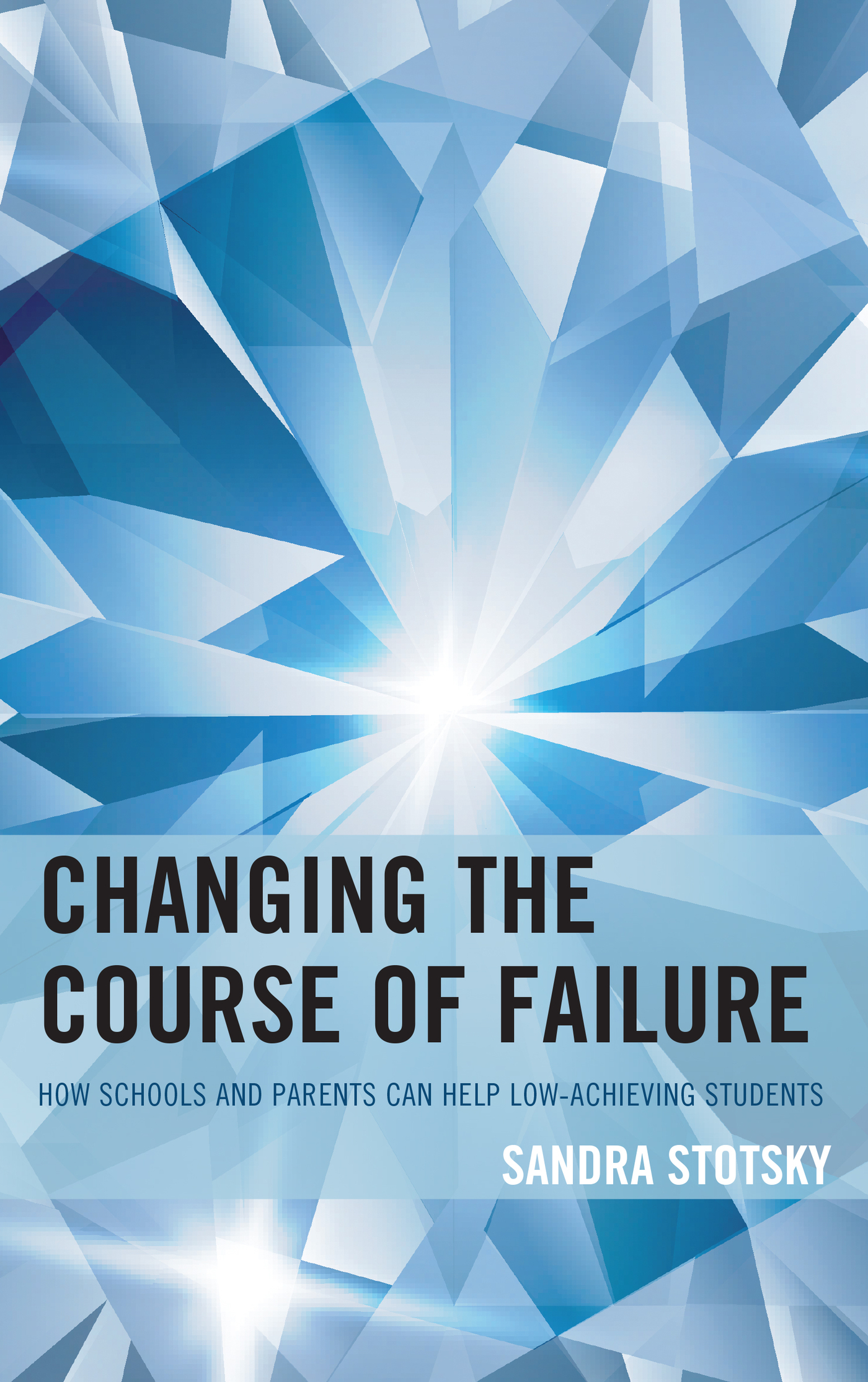Changing the Course of Failure
Changing the Course of Failure
How Schools and Parents Can Help Low-Achieving Students
Sandra Stotsky
ROWMAN & LITTLEFIELD
Lanham Boulder New York London
Published by Rowman & Littlefield
An imprint of The Rowman & Littlefield Publishing Group, Inc.
4501 Forbes Boulevard, Suite 200, Lanham, Maryland 20706
www.rowman.com
Unit A, Whitacre Mews, 26-34 Stannary Street, London SE11 4AB
Copyright 2018 by The Rowman & Littlefield Publishing Group, Inc.
All rights reserved. No part of this book may be reproduced in any form or by any electronic or mechanical means, including information storage and retrieval systems, without written permission from the publisher, except by a reviewer who may quote passages in a review.
British Library Cataloguing in Publication Information Available
Library of Congress Cataloging-in-Publication Data Available
Library of Congress Control Number: 2018938141
ISBN 978-1-4758-3995-1 (cloth : alk. paper)
ISBN 978-1-4758-3996-8 (pbk. : alk. paper)
ISBN 978-1-4758-3997-5 (electronic)
 TM The paper used in this publication meets the minimum requirements of American National Standard for Information Sciences Permanence of Paper for Printed Library Materials, ANSI/NISO Z39.48-1992.
TM The paper used in this publication meets the minimum requirements of American National Standard for Information Sciences Permanence of Paper for Printed Library Materials, ANSI/NISO Z39.48-1992.
Printed in the United States of America
To my five children and many grandchildren
Acknowledgments
To the many other parents and grandparents across this country who want their public schools to prepare their children and grandchildren for the demanding but voluntary activities of self-government.
Preface
Teachers are not Substitutes for Familiesor Accountable for Low Achievement
This book is about this countrys efforts to educate and raise the achievement level of large numbers of low-achieving studentsstudents who perform academically below average for their age or grade level. It suggests alternatives to what educators over the past century and a half have done (especially in reading or English classes) to keep large groups of low-achieving students in school until high school graduation.
This book is not just about the education of students with low-income parents. All low-achieving students do not have low-income or poorly-educated parents. (Nor do all low-income parents have low-achieving children.) This book is about students who are not eligible to become members of their high schools Honor Society when in high school and who usually need developmental coursework (below-college-level coursework) in mathematics and reading if they are admitted to college. But they or their parents are not necessarily poor.
This country has always had low-achieving students (relatively-speaking) and always will. Every country has and will continue to have low-achieving students. Because low achievement anywhere is relative to high achievement, there will always be low-achieving students. However, efforts to educate low-achievers in this country today are more difficult than they should be because low achievers are not considered responsible for their low achievement. Their schools, teachers, even parents are. And because low achievers are not held accountable in any way for their academic efforts, they have no reason to change their academic behavior or academic status. They get the rewards higher-achievers once did without having to exert the academic effort higher-achievers once did.
There are several reasons why low-achieving students are at the center of educational attention today. (1) Many of them in this country are African Americans or have dark complexions and poor parents. Americans in general have been taught that they are responsible for these low-achieving students chiefly because of the attitudes and behaviors of their ancestors towards people or immigrants who didnt look, talk, or act like them.
(2) Whatever their background, theres little evidence that low achievers on average read or write better than they did decades ago despite all the money and programs devoted to their education in the past fifty years.
(3) Large differences in academic achievement across politically defined groups are considered unacceptable by education policy makers and many others today. These differences are considered today a reflection of an unequal allocation of resources such as school facilities, teachers, and curriculum materials across public schools.
The basic purpose of this book is to raise several questions in readers minds:
First, what can help education policy makers to understand that widespread adolescent under-achievement is a social problem and not susceptible to solution by educational interventions no matter how much money is allocated to public schools and colleges?
Second, what kinds of evidence do education policy makers need to understand that it damages all students education to expect the wrong institutions (public schools and colleges) to keep on trying to solve a growing social problem?
Finally, what are the varied civic costs of this countrys institutionally misplaced focus on low achievement?
These questions become urgent when a U.S. Department of Education-funded study of a community college issued in April 2017 finds that most fulltime first-time freshmen seeking an associate degree were initially placed in developmental [below college-level] courses in English and in math. In other words, most students were unprepared for college coursework, raising questions about the best uses of post-secondary resources and the effectiveness of K-12 education resources.
Many education policy makers seem to think that all Hispanic and African American students are low achievers. But only 25 percent of this countrys fifteen year-olds are low achievers, according to the 2012 Program for International Student Assessment (PISA) results, many perhaps most are not low achievers according to test results.
Many education policy makers also seem to think that that most of the children in poor or low-income families are Hispanic or African American. But that is not the case with respect to numbers. The National Center for Children in Poverty at Columbia University finds more white children in low-income families than any other racial group. The percentage of each group in low-income families may be higher for Hispanic or African American children, but not the overall numbers. Policy makers want gaps closed between the members of these two groups and other non-Asian groups in this country without clarifying what is meant by a gap.
Puzzlingly, growing academic differences between Asian students and white, Hispanic, or African American students raise few if any expressions of concern by education policy makers. Moreover, many policy makers have chosen to see academic differences among only non-Asian student groups as unacceptable. They have also chosen to see these differences chiefly as a reflection of an unequal allocation of such educational resources as school facilities, teachers, and curriculum materials, or of unequal access to them.
These choices by policy makers have created at least two problems. By claiming bigotry as a cause of the gaps, they have implied that local educators are accountable for the gaps. This claim also seems to have led policy makers to develop weak (gap-closing) English language arts standards, not academically strong standards, to guide development of the K-12 classroom curriculum and teachers professional development. Weak standards may have been created based on the assumption that most low achievers couldnt address academically strong standards.
Next page
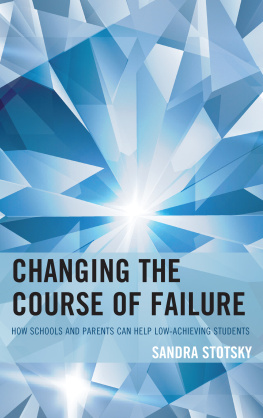

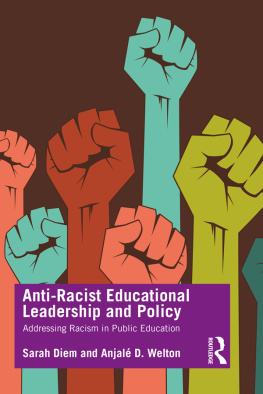

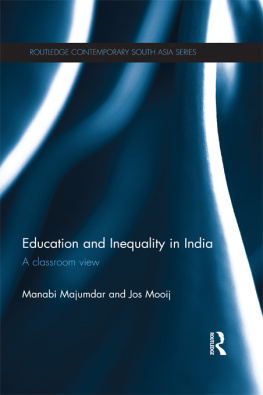
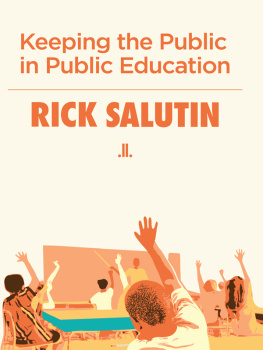
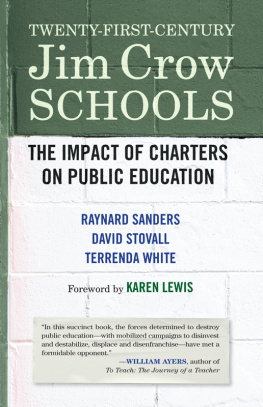
 TM The paper used in this publication meets the minimum requirements of American National Standard for Information Sciences Permanence of Paper for Printed Library Materials, ANSI/NISO Z39.48-1992.
TM The paper used in this publication meets the minimum requirements of American National Standard for Information Sciences Permanence of Paper for Printed Library Materials, ANSI/NISO Z39.48-1992.